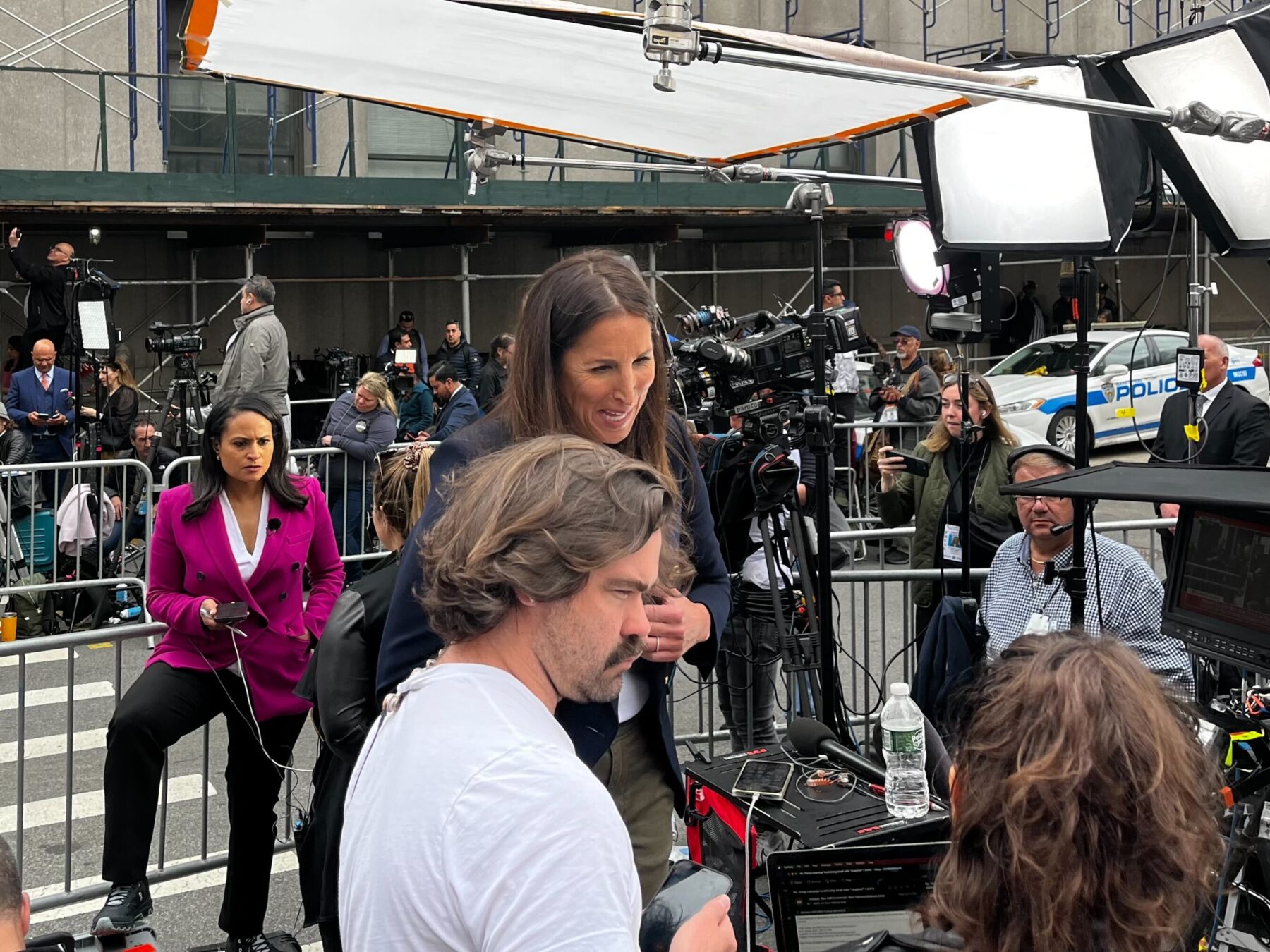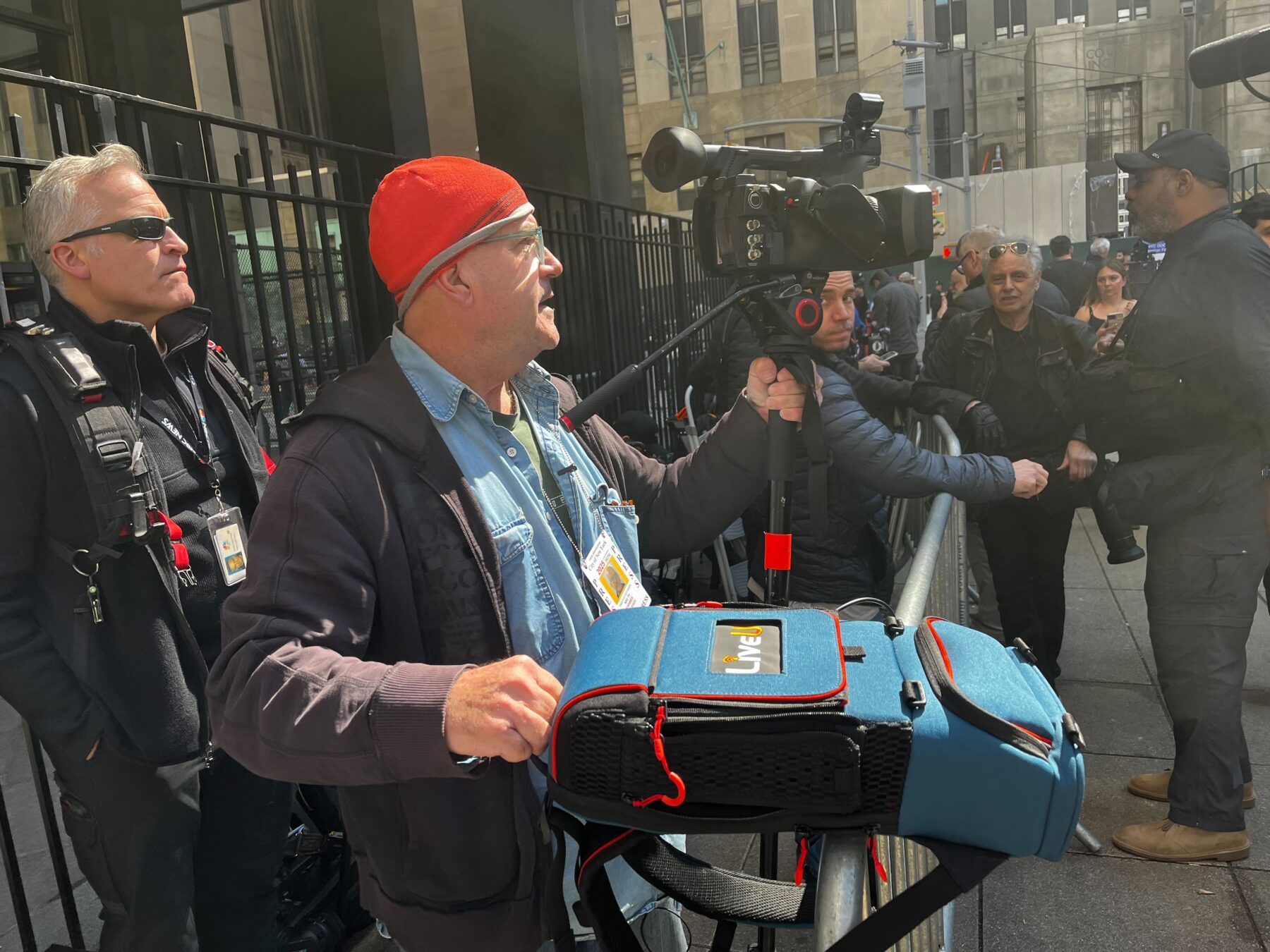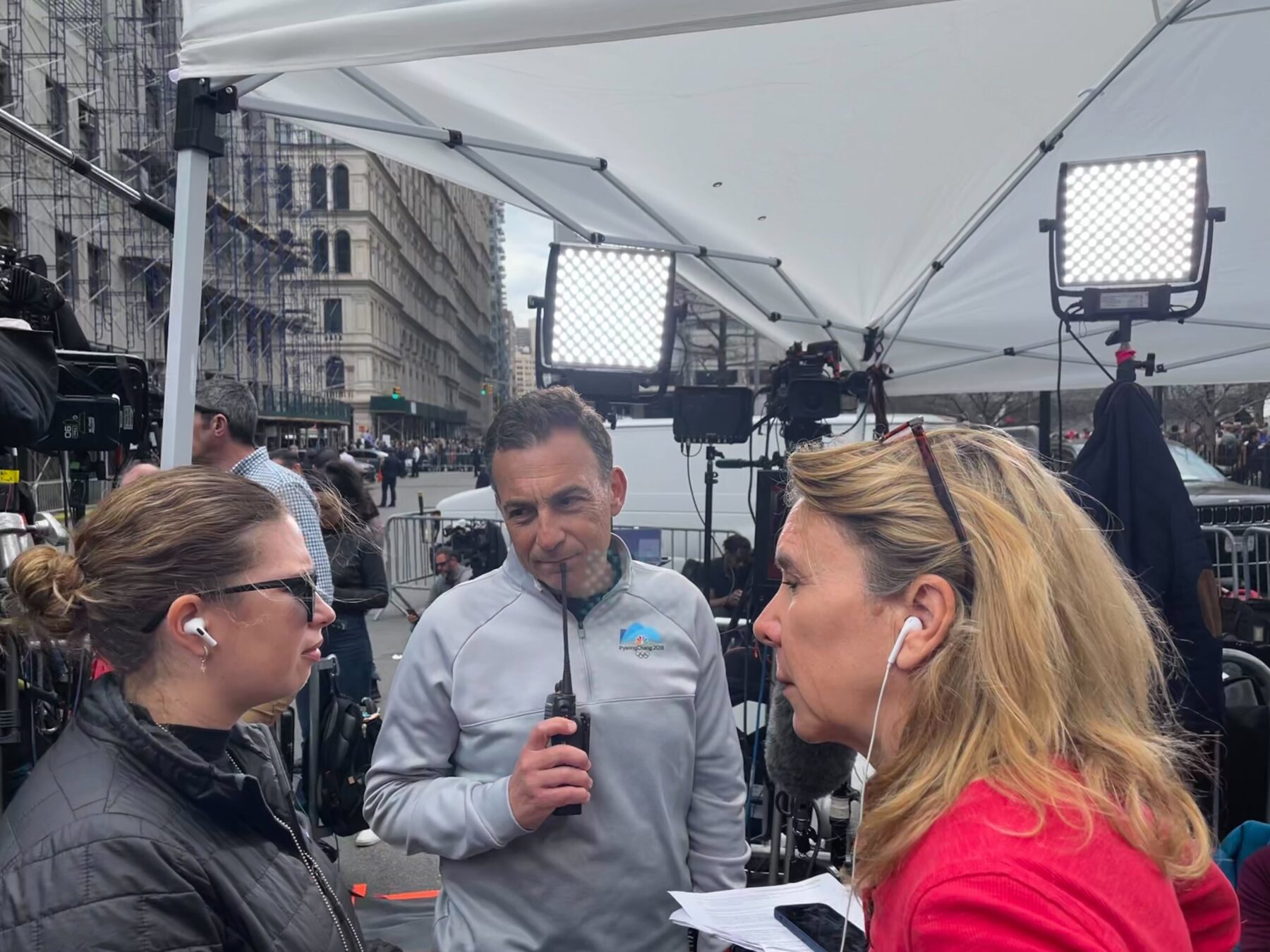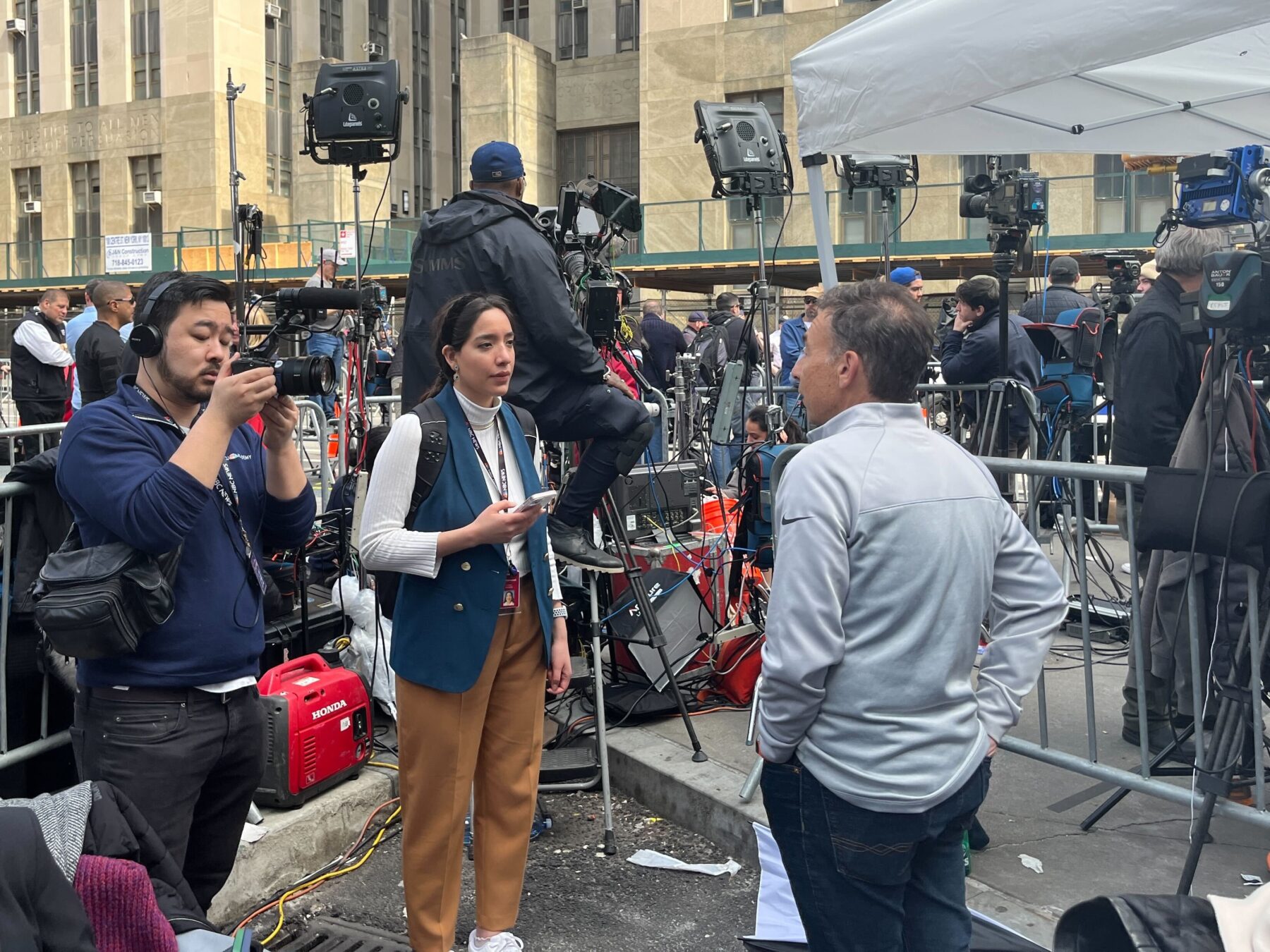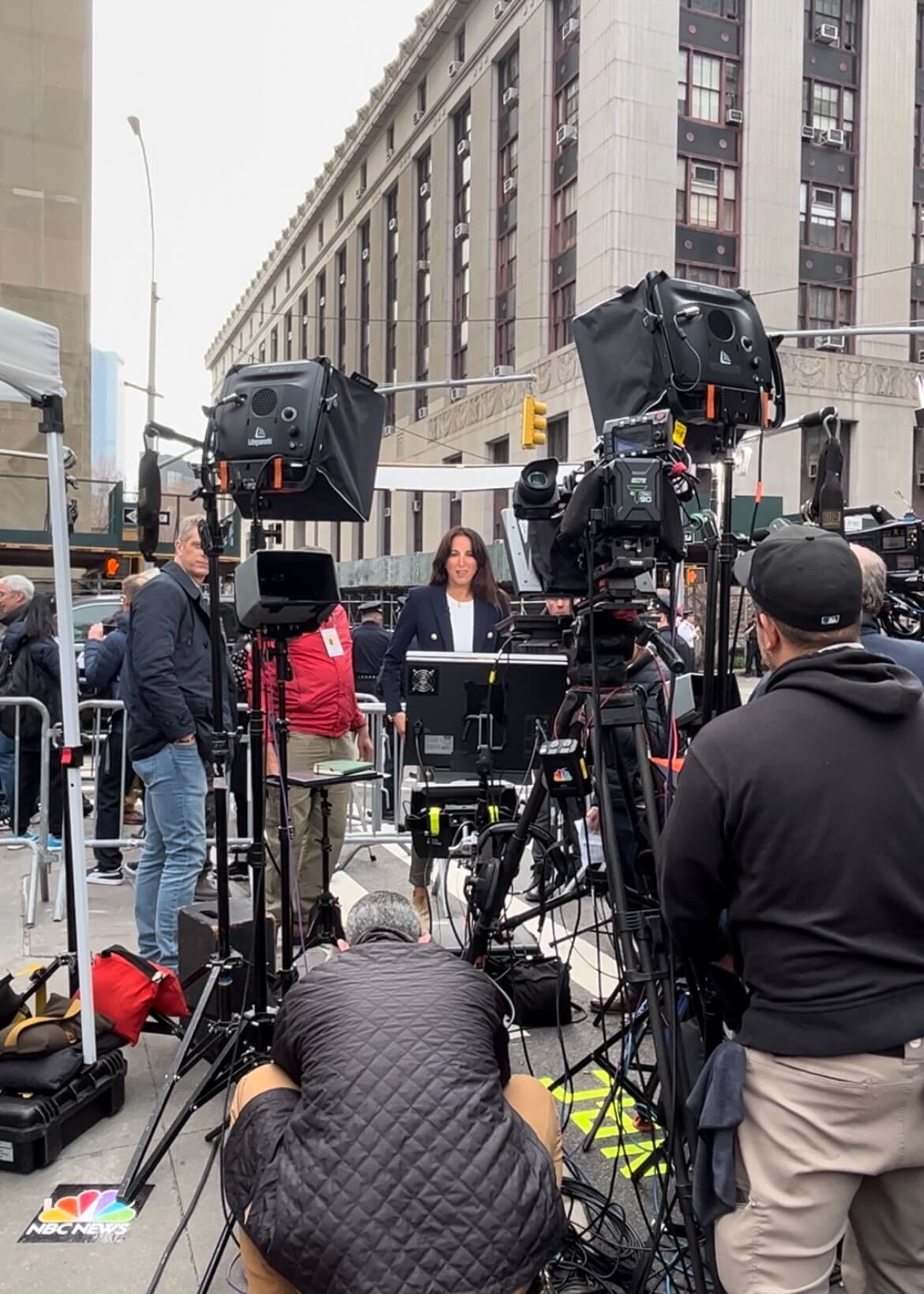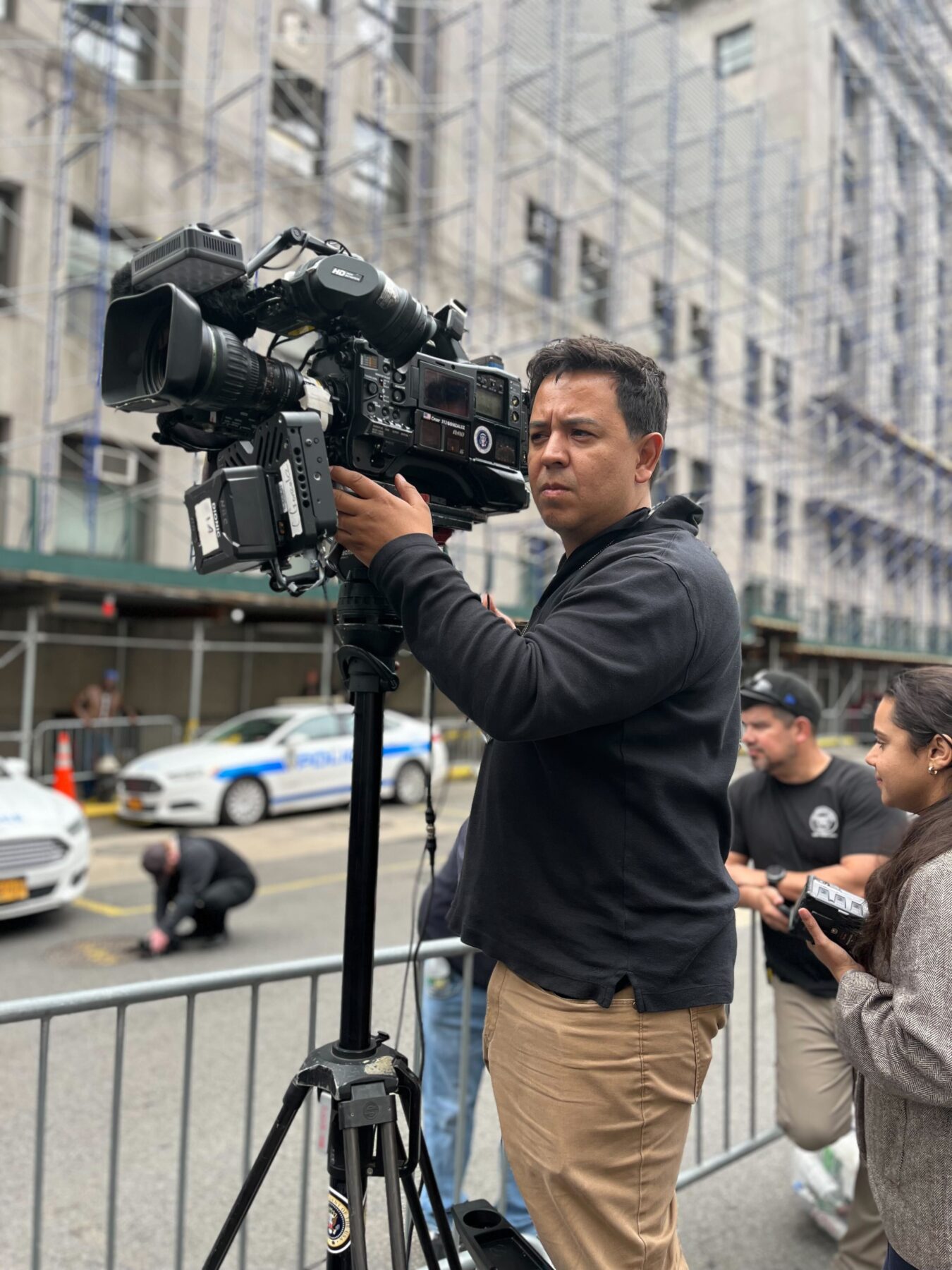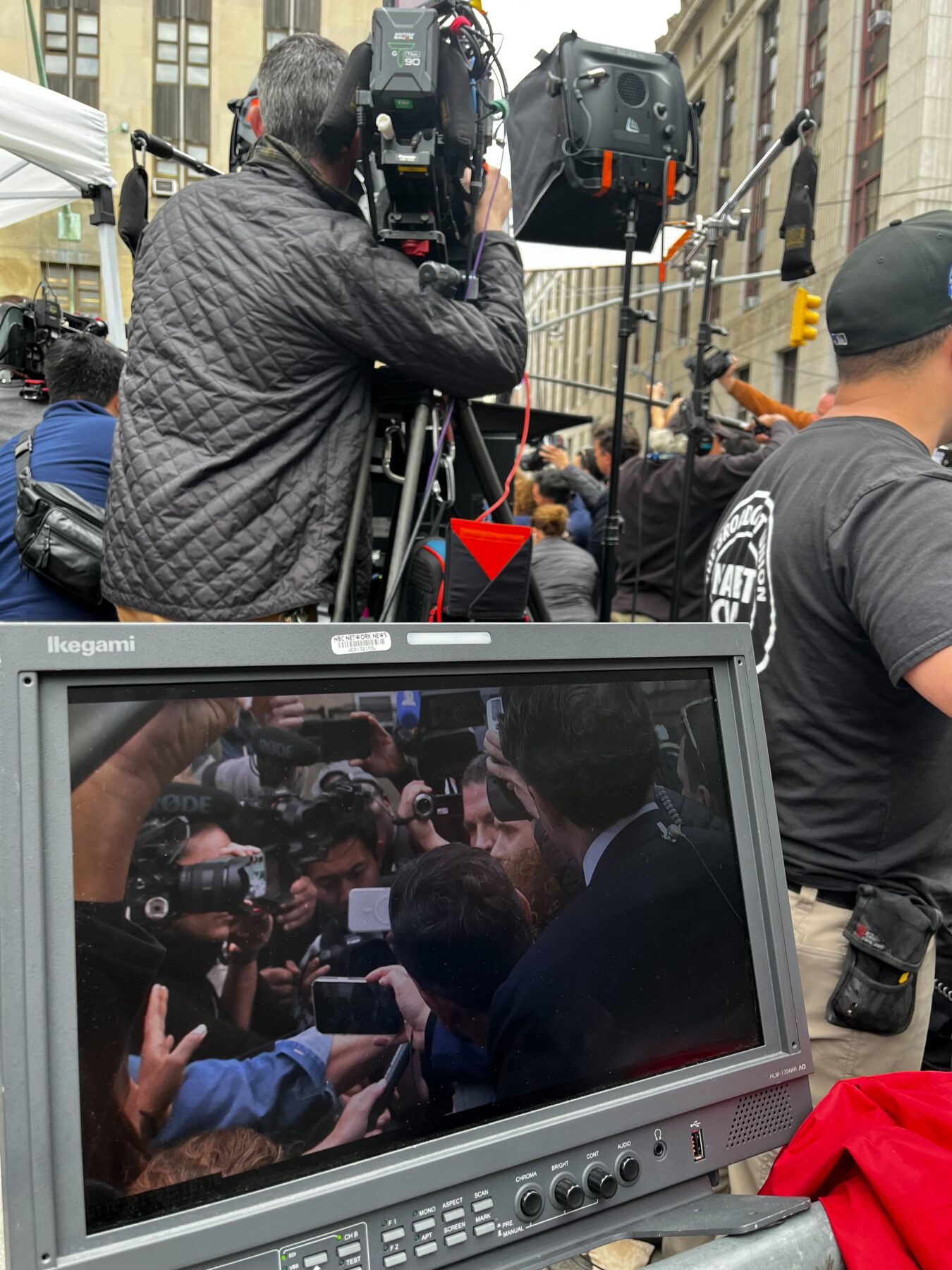In journalism, a stakeout is exactly what it sounds like: journalists monitoring a location for sources and people of interest, over many hours or even days.
To prepare for former President Donald Trump’s indictment, more than 70 NBC News journalists set up outside the Manhattan courthouse and District Attorney Alvin Bragg’s office for weeks to see which witnesses and staff entered. They were there so long, they started keeping a tab at a nearby bodega for whenever they could sneak in a food run.
“You can’t go to the bathroom, you can’t eat,” said NBC News photojournalist Bill Angelucci. “You got to hang in here.”
NBCU Academy spoke to Angelucci, associate producer Katherine Koretski, producer Carolina Gonzalez, field producer Olympia Sonnier, senior coordinating producer Sue Kroll, technical manager Aaron Sasson and many others covering Trump’s arraignment. Watch the video above and read what they had to say below about how to best prepare for a stakeout. Comments have been edited for brevity.
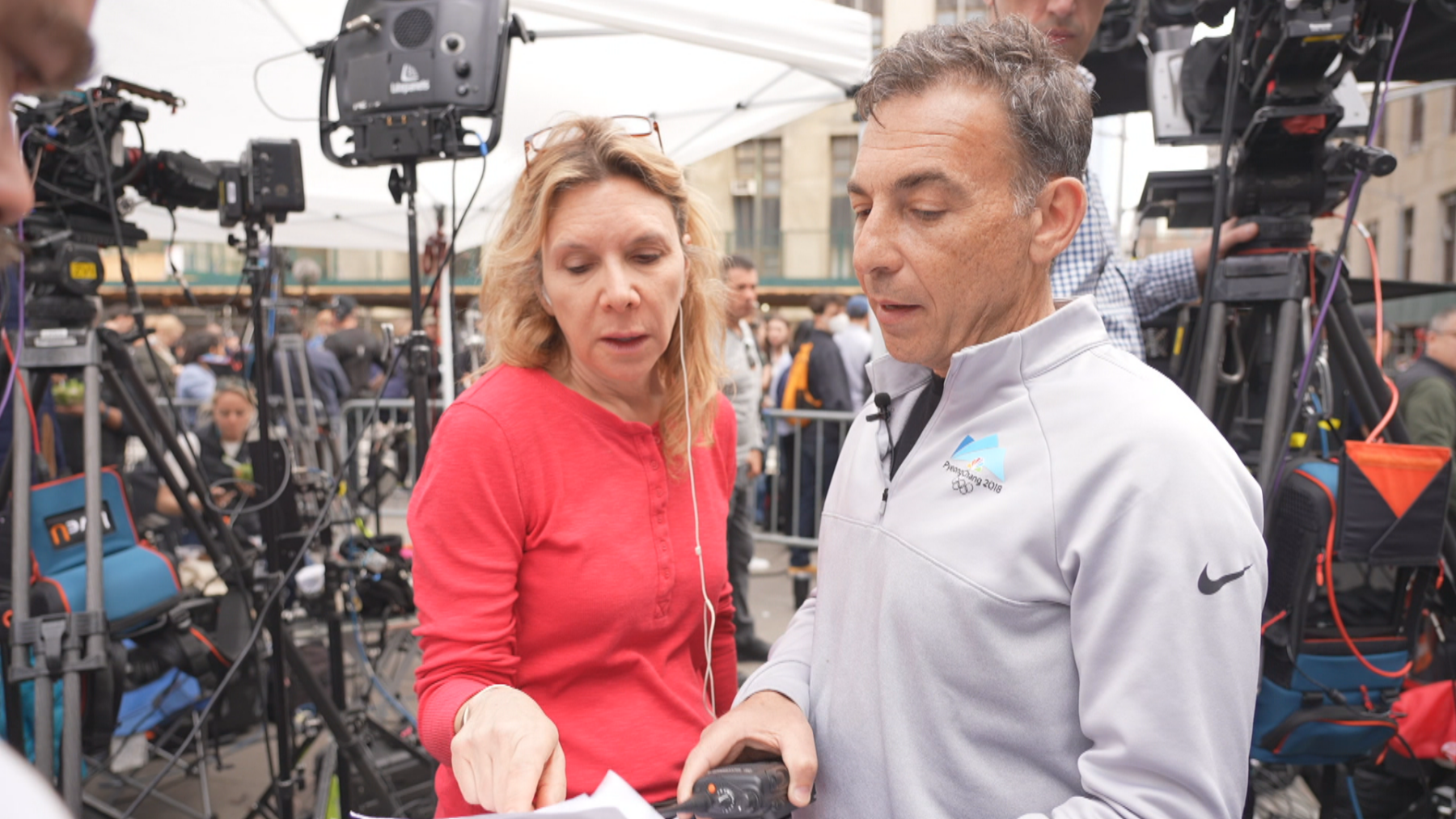
What tech preparations go into stakeout coverage?
Sasson: We do a site survey to get a lay of the land and then we start putting together a plan. I work with an editorial team to see what they’re looking for, and I provide all the technical services. The plan for this one was to have multiple cameras laid out over the city and here [at the courthouse] on location.
We knew we needed satellite [transmission]. There are other technologies right now that get us on the air, but with so many spectators and press, our cellular capabilities have been greatly diminished. We’re not only thinking about transmission, but also power.
Stakeout days tend to be long. We initially get on-site, put up a couple of camera positions and then wait hours and hours for something to happen. Once it does, everybody has a role, and they know exactly what they’re doing.
What kind of coordination makes this stakeout possible?
Kroll: I’m pretty much in touch with everybody at the network. We are doing conference calls that probably have 80 people, as we are all coordinating real minutiae that you would think don’t matter, but it’s extremely detailed for television, as well as for digital.
I am in touch with each camera crew, the producers, the correspondents, the managers. I’m in touch with [the NBC News] Specials [team], who’s going to go live as soon as the president leaves Trump Tower.
For stakeouts, I try to empower my team so they know who they’re looking for. Cameramen, satellite [truck teams], everybody has photos so they know who we’re looking for. You’re staking somebody out — sometimes you’re staking lots of people out.
What’s your advice for up-and-coming journalists on a stakeout?
Sonnier: Say yes to getting coffee, say yes to logging, say yes to carrying the monopod, say yes to carrying the tripod. Every assignment has an opportunity. Sometimes stakeouts really suck. Sometimes you’re literally sitting with a crew for hours on end. But if you’re the one network that gets that shot, it’s totally worth it.
Be hungry and be humble. You’re going to get to certain points in your career where you think you’re above it, and you’re not. Garrett [Haake, NBC News senior Capitol Hill correspondent] still sits down and logs, I still sit down and log.
It’s a team effort, and TV is a massive team. You’re in a car for 14 to 16 hours a day, you’re hanging out with the same four people — tensions run high, you can get snippy. But at the end of the day, be respectful, be kind and have some fun. Having a good personality and being able to deal with the monotony really helps.


